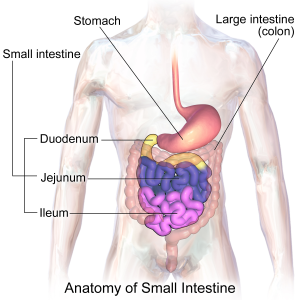
As a pelvic floor physical therapist, I interact with many other health care providers who provide valuable services to women. I recently had the wonderful opportunity at a networking group to meet Risa Klein, an incredible and inspirational Certified Nurse Midwife (CNM) who has touched the lives of many women. From the moment I met Risa and experienced her warmth and positive energy firsthand, I realized what a gifted and emotionally sensitive individual she is. She treats others the way I strive to treat my clients, and I realized how much there is to learn from Risa. Risa carved time out of her busy schedule to discuss in greater detail the work she does with pregnant and postpartum mothers. I found her line of work so fascinating that I have decided to discuss it with you today, and I will also be including a special guest blog post from Risa about healthy nutrition during pregnancy.
Risa Klein has been working with pregnant women for 25 years. She is a graduate of the midwifery program at the Columbia University School of Nursing, where she received her Master of Science degree in Nursing with a specialty in Midwifery. It was her empowering birth experience with her daughter in 1989 that propelled her into the world of helping pregnant women. She is a prolific writer who has written extensively on her specialty in the form of articles and blogs,and she is even currently in the process of writing a book. Furthermore, she volunteers regularly at the Ronald McDonald House, and she has served as a birth consultant for two feature films, Baby Mama and Maze. Her office is located on Manhattan’s Upper East Side. Risa offers a home birth approach in the birthing center and on Labor & Delivery at Mt. Sinai West in New York City. Her website, manhattanmidwife.com, contains an immense amount of fascinating information which I have read “cover to cover” because once I started, I couldn’t get enough!
And so, without further ado, I present to you a special guest blog post which Risa has kindly shared:
How to Avoid Induction of Labor Ensuring Your Baby’s Swimming Pool Stays Full!
“You have low amniotic fluid and you need to be induced immediately,” the perinatologist explains in a polite and rightfully concerned voice. The woman just had an ultrasound because she was one week past her ‘due date.’
“What? How did this happen?” she cries.
Having worked with Andrew Garber, MD, a high risk perinatologist for 11 years and co-managed many of his high risk clients, (along with having my own home birth and hospital midwifery practice,) I can share many stories like the above. The reality is that women can find themselves getting induced when amniotic fluid levels drop to unsafe levels for the baby weather your pregnancy starts out as high or low risk. As per ACOG (American College of Obstetricians and Gynecologists) guidelines, induction is medically required when fluid measures less than or equal to five centimeters.
What is amniotic fluid? It’s largely the baby’s urine and other important growth factors from your placenta. Babies, surrounded by their amniotic sacs, are protected and warm as they move and develop in sufficient amounts of amniotic fluid in the sac. I’d like to draw what I hope to be a memorable analogy to help you understand how you can avoid the above scenario. Imagine a swimming pool that has been filled to capacity, well kept, and pristine. In the uterus, the baby is surrounded by the amniotic sac – a thin, strong, double membrane and it’s like the filled swimming pool. Your baby’s amniotic fluid levels are like the water in the swimming pool. You and baby can only swim in a pool if it has been filling adequately.
Now imagine going back the next day to the swimming pool and the water level is barely enough to wade in. Both the amniotic sac and the swimming pool are dependent on someone filling them up. Just as the swimming pool gets filled up when someone uses a water source usually a hose, the amniotic sac is only filled when your baby receives nutrition via the umbilical cord – a different kind of hose. Think of the umbilical cord as your baby’s lifeline, connecting your baby to your placenta, the organ that works to nourish and detoxify what gets through to your baby. Your baby’s growth and development is dependent on what flows through your baby’s lifeline. You are the source, the lifeline for your baby so when you eat and drink well your placenta will deliver maximum nutrients to enable baby to urinate.
Healthy nutrition also has a direct impact by keeping the amniotic sac strong so it can prevent tearing or breaking prematurely. A key function of the amniotic sac, in addition to holding the baby and amniotic fluid, is to be protective, helping to avoid complications of prematurity or infection.
Now onto the critical importance of amniotic fluid measurements and their implications for the health of your baby and induction. Think about the layouts of most in ground swimming pools – there is a shallow end and a deep end. You can’t dive into the three foot section because you know it is dangerous as you can hit your head or worse. For safety, you go to the ‘deep end’ to dive in. Likewise for labor and delivery your baby will be better able to navigate the pelvis with greater safely and ease when there is more volume of amniotic fluid – when the pool is deeper. Ample fluid levels also help cushion the baby’s head as baby turns through the pelvis, while also cushioning the umbilical cord. Fluid is protective so that during labor there is less incidence of the baby’s umbilical cord getting compressed causing fetal distress. This intrauterine pool allows baby to more readily receive oxygenated blood flow, helping to keep fetal distress, or heart rate problems away. It’s safer to swim in a well filled swimming pool right from birth.
The relationship between you, your placenta, and baby is paramount. By being mindful of your nutrition and lifestyle you can decrease incidence of fetal distress due to low fluid volume, and increase the quality of nutrients to the placenta. Healthy placentas are thick and lush with cotyledons (look like lobes with small branches) with villi that supply nutrients to your baby. The better your nutrition, the larger the diameter of your placenta with greater nourishment getting to your baby as there will be more circulation going through the placenta, then through the umbilical cord, and then reaching your baby.
To ensure sufficient amniotic fluid levels, reassuring heart rate, and a healthy placenta, fetal surveillance is done through both manual palpation of your abdomen by your healthcare provider, and through use of ultrasound. When a woman goes past her due date, she will get a Biophysical Profile at the Maternal Fetal Medicine (MFM) unit in her hospital. Perinatologists are highly experienced physicians trained to evaluate fetal heart rate and well-being.
How would you know if your fluid is going low? a. if you have not steadily gained weight; b. your fundal height (measurement of your abdomen from the top of your pubic arc to the top of your uterus) has not increased in several or more weeks. c. the baby feels ‘stuck’ on one side of your abdomen for a day or more. d. fetal kicks are reduced or movements are reduced and if this occurs you need to immediately contact your provider.
Fluid levels can drop in an acute situation, for example, if you catch a bad cold or get sick. The great news is that you can restore fluid levels in 24 hours and reverse a trend making low fluid a non-issue rather a chronic issue – meaning the baby has been at risk for a while. While an IV of fluid is certainly what you will get in the hospital ER, once admitted near or past term, you set yourself up for induction. At this juncture there is no time to try other ways to get your labor going, like acupuncture, which I address in an upcoming blog of mine. At the onset of an induction, if your cervix is not ripe, (determined by Bishops Score,) meaning its consistency is not soft, or at least 50% effaced or thinned out, two centimeters open or dilated, positioned midline, with baby’s head engaged, (for a first time mom), the induction will fail in 75% of these cases and a c section results.
Here are some third trimester tips to keep your baby’s precious pool warm:
- Eat and drink throughout your day at least every two hours
- Salt your food to taste
- Slow down. If you are doing six things during the day, reduce to three
- Kick your feet up whenever possible, or rest on your left side for an hour to help circulate your blood flow. Reduce exercise and discuss with provider.
- If your job requires you to stand for long periods, sit down every hour to hour and a half and elevate your legs to move the blood flow back up to your heart and baby. If your job requires you sit for long periods of time, be sure your feet are elevated, get up hourly to stretch.
Barring any preexisting medical condition, or any unforeseen emergency for mother or baby beyond anyone’s control, if you follow these guidelines, your baby will be nourished, urinating, amniotic fluid levels should be within range – the pool will be perfect to swim in. Congratulations on a job well done!
“What is this mommy?” children often ask while pointing at their belly button. What will be your answer?
“It’s how I fed you!” said enthusiastically, could be most easily understood at that young age. I consider the belly button to be a historical landmark of the original lifeline existing between mother and child. It is our birthright, identifying that from which we came, a life giving symbol. It’s something we all have in common as human beings – we were all nourished through an umbilical cord.
For more ACOG information on fetal monitoring, visit their website: http://www.acog.org/Patients/FAQs/Special-Tests-for-Monitoring-Fetal-Health#results
I hope you found this information useful.
Do you have ideas how you can ensure keeping your baby’s swimming pool well nourished?



